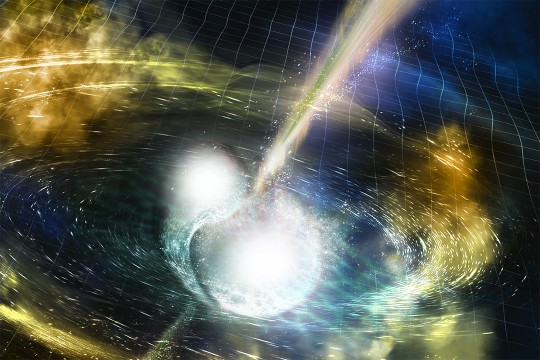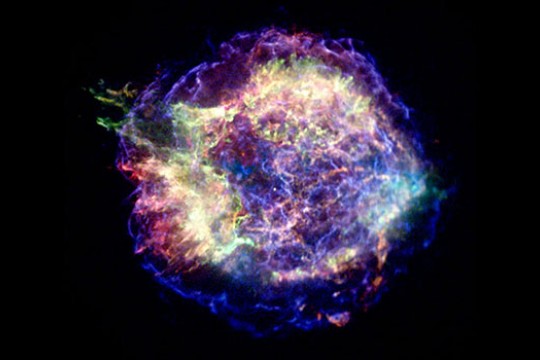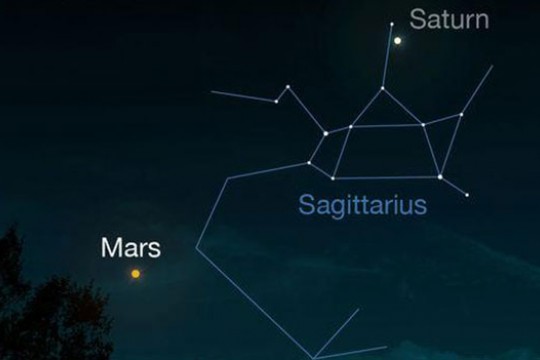News
-
November 1, 2018
![Mishkat Bhattacharya standing in front of white board and writing out equations.]()
RIT collaborates on multi-university research exploring the quantum world
RIT researcher Mishkat Bhattacharya is building a theoretical framework to predict how nanoparticles made of graphene, silica and rare-earth compounds behave when suspended within the center of a laser beam. -
October 26, 2018
![Triana Almeyda holds her Ph.D. Dissertation Award and poses for a photo next to Twyla Cummings.]()
RIT alumni recognized for outstanding research on black holes
RIT’s Office for Graduate Education recently celebrated groundbreaking research on black holes by two alumni at the annual Graduate Alumni Awards reception. -
October 24, 2018
![Side profile of a small brown elephant.]()
Research on elephants could translate to robotics
Understanding how elephants use their trunks to pick up small objects could lead to robots designed with flexible hands or grippers, according to a new study that includes research by RIT scientist Scott Franklin. -
October 3, 2018
![Computer simulation of neutron stars merging with other neutron stars or black holes.]()
RIT leads project to simulate neutron star mergers
RIT is advancing computer simulations to predict, for the first time, the complete cycle of neutron stars merging with other neutron stars or black holes. The project is supported by $1.5 million from NASA. -
October 2, 2018
![Two black holes swirl around each other, nearly touching in the center of the image. The black holes are bright pink and fade to a dark blue or purple around the edges.]()
Model follows light to supermassive black holes
The hunt is on for orbiting pairs of supermassive black holes on the verge of collision. Researchers at RIT have built the first simulation that could lead scientists to them. -
September 30, 2018
![Steve Wear and Sophia Maggelakis pose for a photo together, Wear holding the distinguished alumni award trophy.]()
2018 Distinguished Alumni: Meet Steve Wear
Meet Steve Wear ’91 MS (imaging science), the College of Science 2018 Distinguished Alumnus. -
September 10, 2018
![Head-and-shoulders view of man with glasses]()
RIT wins collaborative award to improve STEM ecosystem
RIT professor Casey Miller won $880,000 from the National Science Foundation INCLUDES program, which seeks to increase and strengthen efforts to create a diverse STEM workforce to meet the nation’s future needs and maintain its standing in research and development. -
September 7, 2018
![Male student with glasses dressed in suit.]()
Student leaders work to grow graduate culture
Yashar Seyed Vahedein, an engineering Ph.D. candidate, established the Doctoral Student Association (DSA) as a social and professional connection for RIT’s doctoral and prospective Ph.D. students. -
August 27, 2018
![The Inclusive Excellence researchers pose for a photo together in front of their research posters.]()
Inclusive Excellence cultivates diversity
The first Inclusive Excellence research fellowship was held this summer and paired seven undergraduate students in the College of Science with research mentors. The initiative is working to create a deeper understanding of diversity in the College of Science and at RIT. -
July 25, 2018
![supernova.]()
Massive black holes on the edge of spiral galaxies
Findings from an RIT study provide further evidence that the outskirts of spiral galaxies host massive black holes. These overlooked regions are new places to observe gravitational waves created when the massive bodies collide. -
July 16, 2018
![The night sky showing constellations.]()
RIT Observatory focuses on Mars July 20, Aug. 3
The public is invited to view the Red Planet with the observatory’s telescopes from 9:30 to 11 p.m. July 20 (rain date July 21) and Aug. 3 (rain date Aug. 4). -
July 16, 2018
![reflective-light solar sails attached to NASA’s Near-Earth Asteroid Scout.]()
Developing solar sailing technology for NASA
Grover Swartzlander, professor in RIT’s Chester F. Carlson Center for Imaging Science, is taking solar sailing to the next level with advanced photonic materials. This new class of materials could be used to steer photons and enable near-Earth, interplanetary and interstellar space travel.
















